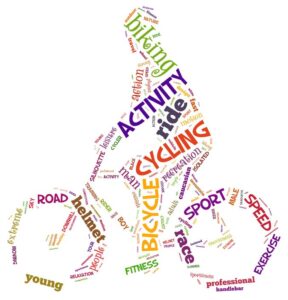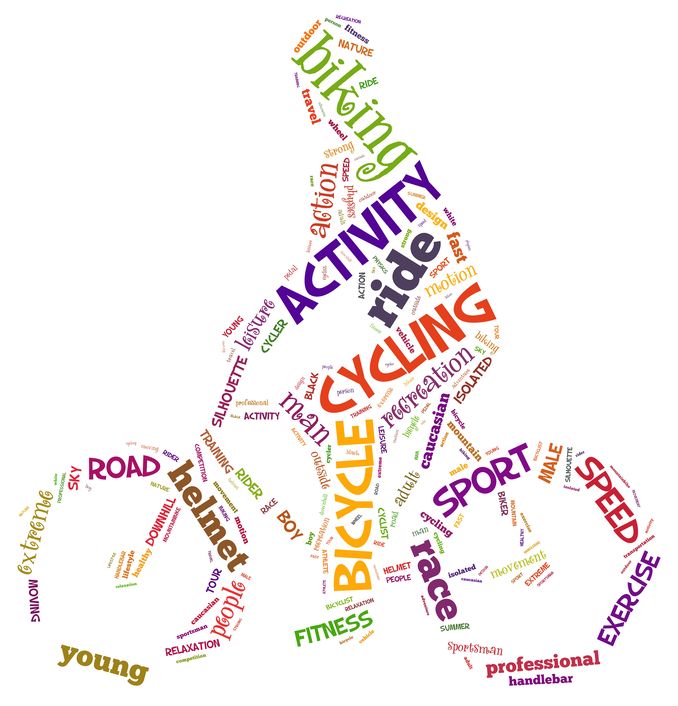The choice between indoor cycling classes and riding outdoors, on the road or weaving up and down rocky terrain, continues to strike a chord among fitness enthusiasts. While personal preference largely dictates one’s decision to either remain in the gym or experience the great outdoors, knowing some technical aspects of each may help clients select the best option for their lifestyles.
 Balancing Benefits and Lifestyle
Balancing Benefits and Lifestyle
In casual conversation with members of my family, I have heard passionate and convincing arguments supporting both sides of the fence. My husband is an avid outdoor cyclist, having engaged in many charity rides over the course of the past decade. He enjoys the scenery, the social aspect of a moving group dynamic, and the challenge of adjusting speed and direction to compensate for environmental conditions.
Our older daughter, on the other hand, finds stationary cycling in her basement a much more convenient option. Juggling schedule restraints, between a full-time career and a toddler, she plans her workouts at a certain time of day, never worrying about contending with inclement weather.
Both family members support the platform of improved health, increased energy, mental alertness, enjoyment, and calorie burn that cycling provides. Since neither one rides competitively, their respective choices fit their lifestyles perfectly.
Body and Bicycle Mechanics
When using a stationary bike, one’s upper body workout does not receive nearly as much attention as the larger muscles of the lower body. An outdoor ride, however, incorporates every part of the anatomy. While legs remain the primary players, the core gets challenged to maintain balance, especially while changing from a sitting to a standing position.
Most stationary bicycles function differently from road, mountain or triathlon bicycles. The unique feature which sets them apart, a 30-40-pound “flywheel”, provides the resistance during pedaling. Consequently, hamstrings must work harder to slow down the pedals with every revolution. The wheel will continue to move as it spins, making it incumbent upon the rider to keep up his pace. At a moderate speed, an average 180-pound man can potentially burn 572 calories an hour.
In contrast, outdoors cycling requires pedaling against road friction and wind resistance, tapping more into one’s hip flexors and quadriceps. Here, an average 180-pound man can potentially burn 650- 700 calories an hour at a moderate speed, depending once again upon the intensity of the riding surface.
Riding Aerobically versus Anaerobically
During a ride on a stationary bike, the possibility exists of achieving 75-95 percent of one’s maximum heart rate. Pedaling at a consistent speed, the body can potentially maintain this heart rate for as long as energy allows. During such movement the body functions aerobically, efficiently burning maximum calories over a shorter duration. Increasing the resistance and/or intensity of the pedals can render the activity more anaerobic in nature.
Due to the elements facing a rider, outdoor cycling often necessitates periodic adjustments to speed throughout the ride, leading to a more anaerobic workout. Maintaining an elevated heart rate and consistent calorie burn still requires constant cycling.
An Environmental Consideration
Participants in an indoor cycling class have reported struggling to remain focused for an entire hour on a single task. Outdoor cycling on a road or mountain bike might take the rider on different terrain and dodging potential obstacles, both of which require technical knowledge and keen mental acuity on the part of the rider.
When riding a road or mountain bike, one can also get caught up in the scenery. Conversely, in the absence of such a backdrop, indoor cyclists often find themselves getting bored, causing one’s brain to wander away from the intensity of the task at hand. Technology exists for some indoor equipment to allow users to watch a video of passing scenery, but this hardly compares to the authentic outdoor experience. Still, better than nothing!
In terms of keeping our environment “green”, bicycles pose little or no threat of leaving an undesirable carbon footprint. The sole CO2 emitted comes from the breathing output of the rider. Stationary bikes, on the other hand, often use power, whether to charge up monitoring devices or powering the cycle itself. Each workout, therefore, emits CO2 from the rider coupled with the bike’s power consumption. This may seem negligible, but a dedicated indoor cyclist definitely will tally up emissions over time.
Staying Safe
“Street smarts” takes on an entirely new dimension when considering how to obtain one’s exercise as a cyclist. When I was a new driver, I would often see signs such as, “Share the road with a runner” posted near parks or trails. Today, with the increasing incidence of collisions between cars and cyclists, I cannot help but think we need more signage to protect cyclists.
The prevalence and severity of this issue may cause avid riders to take to parks and country roads in place of city or even suburban cycling. Utilizing a stationary bike in one’s basement, or participating in a cycling class within the safety of a gym studio, eliminates any such hazards. Each individual must weigh his/her options, carefully considering the pros and cons.
Either Option is a Winner
Whether enjoying the fresh air or escaping harsh weather conditions, the key to an effective calorie burn lies in elevating the heart rate to an appropriate level while periodically alternating with bursts of intensity to challenge the body. A satisfying and effective workout exists for indoor and outdoor riders alike.
Regardless of your preference, push your body and increase the intensity to see some measurable, positive changes in your mood and overall health, and be sure to balance the cardio contribution with sufficient core and strength work to bolster your cycling performance.
References:
www.hixmagazine.com/calorie-burn-stationary-bike-vs-outdoor-cycling/
www.icebike.org/exercise-benefits/
www.foxnews.com/lifestyle/the-better-workout-indoor-cycling-vs-outdoor-cycling



